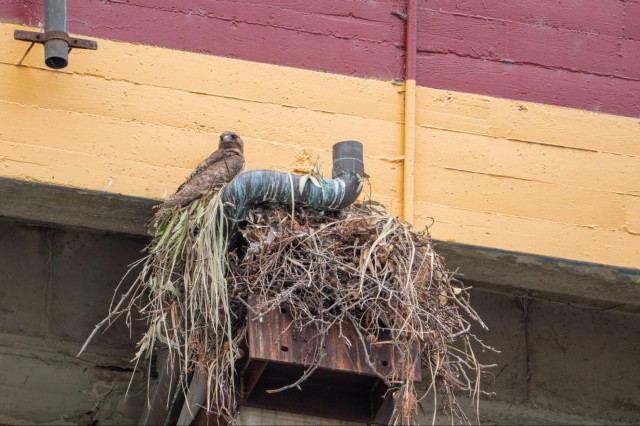The Newly Described Andean Storm-Petrel Is Just Our Type (Specimen)
Get a behind-the-scenes look at Ornithology's type cabinet and meet some of the specimens used to describe new bird species
In NHM’s Ornithology Collections, there are row after row of shelving filled with bird specimens. As scientific records, each one of them is precious, but one cabinet’s specimens are more precious than the others.
“This is what we’d save if there was a fire in the building,” says Dr. Allison Shultz, feather color expert, incredible fiber artist, and Associate Curator of the bird collection at the Museum. She’s referring to a small, wheeled cabinet of shelves called the type cabinet. Every specimen inside was used to describe species or subspecies new to science, and Shultz has graciously taken the time to introduce the newest addition: the newly described Andean storm-petrel, Oceanites barrosi.
“New” species of birds is a bit of a short-hand for “newly described” species—something previously unrecognized by science—but often well-known to the local community. The little gray bird wasn’t unknown to the people of Santiago, Chile. They’d have seen it flying overhead for as long as there’d been people there. Unlike other storm-petrels, they were flying from the ocean to roost in the Andes—the highest mountain range in the Western Hemisphere—which led researcher Alvaro Jaramillo and his colleagues to investigate whether this unique roosting behavior might also mean these were a different species of storm-petrel (it did).
The Chilean researchers compared genetic information from collection specimens to definitively single out the new species from the other storm-petrels that look too similar for humans to tell the difference.
“Most new birds are described from collections instead of from the field, simply because there have been so many scientists focused on birds presently and historically,” says Shultz. “So most of the time when species are described, it's by looking at variation that just wasn't appreciated before, for example, through genetics. That's kind of the biggest way that people are describing new bird species.”
Types of Type Specimens
Which brings us back to the type cabinet. One of NHM’s existing specimens was used as the holotype for the new species (and got upgraded to the fancy digs). When a researcher describes a new species, they need to reference an actual specimen, and this is the holotype. This single specimen carries the name for the entirety of the new species so other scientists can use it as the basis for future research.
There are also paratypes, alternative specimens used in the original description, that might become stand-ins should the holotype be destroyed or lost. Since this is natural history, there are even more esoteric types like syntypes (multiple specimens from before holotypes became the norm in describing new species) and lectotypes (an after-the-fact selected specimen from the syntypes). Allotypes are for when the females and males of a species look really different, and an ergatotype is for “worker” insects (think ants, wasps, and bees).
Photo by Tyler Hayden
This tag identifies the specimen as a holotype, including information about the publication describing the new species, its genus and species, and sex. Other tags list where and how it was collected, along with other information like its call and coloration.
Photo by Tyler Hayden
The critically endangered Nihoa finch (Telespiza ultima) is one of two endemic bird species from the tiny Hawaiian island Nihoa.
The white-starred robin (Pogonocichla stellata) has around 12 subspecies (like this holotype). The exact number is difficult to pin down because researchers all always refining our understanding of species thanks to collection specimens and improvement of tools like genetic analysis. New evidence makes for more compelling arguments for and against naming a new species or subspecies.
1 of 1
This tag identifies the specimen as a holotype, including information about the publication describing the new species, its genus and species, and sex. Other tags list where and how it was collected, along with other information like its call and coloration.
Photo by Tyler Hayden
The critically endangered Nihoa finch (Telespiza ultima) is one of two endemic bird species from the tiny Hawaiian island Nihoa.
Photo by Tyler Hayden
The white-starred robin (Pogonocichla stellata) has around 12 subspecies (like this holotype). The exact number is difficult to pin down because researchers all always refining our understanding of species thanks to collection specimens and improvement of tools like genetic analysis. New evidence makes for more compelling arguments for and against naming a new species or subspecies.
As new research tools continue to let researchers see more deeply into birds, researchers will keep finding new species in collections like NHM’s, and type cabinets across the globe will welcome new holotypes. Discoveries like the Andean storm-petrel underscore the value of those collections, especially as development and climate change threaten their populations in the wild.
“Specimens in museum collections record the presence of species in particular places and times even before we know that any given animal is distinct enough to be its own species,” says Shultz. “So that means that collections are not just likely hiding unidentified species, they’re recording ecological information that can help us craft conservation efforts for those species now and in the future as the environment changes.”
